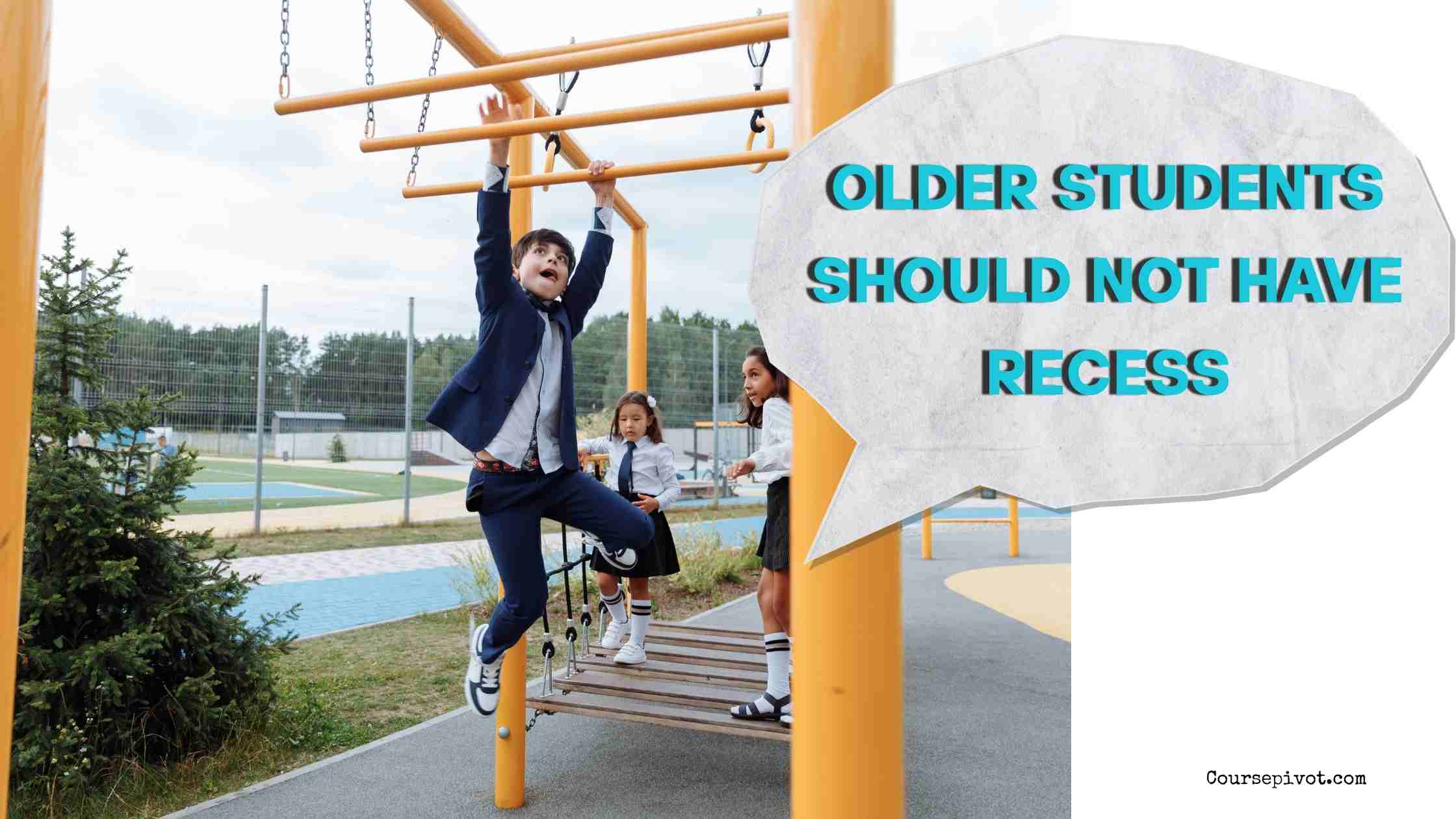
3 Reasons Why Older Students Should Not Have Recess
Recess is often seen as a vital break for young children — a time to run, socialize, and recharge. But when it comes to older students, especially those in middle school and high school, the idea of traditional recess becomes less practical and more problematic.
Read our blog on reasons why recess should be longer
While breaks are still important at any age, structured learning time and age-appropriate responsibility often take precedence over playground-style recess.
Table of Contents
Here are three detailed reasons why older students should not have recess in the traditional sense:
1️⃣ Academic Demands Increase With Age
As students grow older, so do the expectations placed on them academically. Middle and high school students face more complex subjects, faster-paced curricula, and greater pressure to prepare for college, standardized tests, and future careers.
Adding traditional recess time could mean sacrificing valuable instructional minutes that are needed to stay on track academically. Older students already have transitions between classes, lunch periods, and, in some cases, study halls or free periods. These time blocks provide mental breaks without reducing core learning time.
While rest is important, older students benefit more from strategically scheduled breaks or enrichment periods — not unstructured recess — to manage the workload effectively.
2️⃣ Recess Can Lead to Social and Behavioral Issues at This Age
Unlike younger kids, older students often carry more complex social dynamics, peer pressures, and emotional stress. Giving them unstructured free time without guidance can sometimes amplify bullying, exclusion, cliques, or idle behavior.
Teenagers are still developing maturity and emotional regulation, and recess could become a breeding ground for social conflict rather than a healthy break. Many schools already deal with issues arising from lunch breaks or unsupervised time between classes — adding more of it may do more harm than good.
Instead, schools should offer structured clubs, peer mentoring, or supervised recreational activities that support positive social development in older students.
3️⃣ Physical Activity Needs Are Different and Can Be Met Elsewhere
While younger children need recess to burn off energy and develop motor skills, older students have different physical needs and outlets. Most middle and high schools offer physical education (PE), sports teams, fitness electives, or extracurricular activities — all of which are better suited to their age group and development.
Traditional recess — like swings, tag, and jungle gyms — doesn’t meet the physical, social, or psychological needs of teens. Older students benefit more from fitness programs, structured exercise, or wellness breaks that include mindfulness, stretching, or academic support sessions.
Their breaks need to be purposeful, age-appropriate, and tailored to help them succeed — not simply carry over a practice from early childhood education.
My Thoughts
Older students absolutely need time to rest and recharge — but not through traditional recess. Their developmental needs, academic pressures, and social realities require more structured, intentional approaches to downtime.
Instead of playgrounds, let’s give them programs that foster real growth: fitness, mentorship, creativity, and meaningful connection. Because at this stage in life, they need more than just a break — they need balance.
Cite this article
You can copy and paste your preferred citation format below.
Martin, L. & Arquette, E.. (2025, May 14). 3 Reasons Why Older Students Should Not Have Recess. Coursepivot.com. https://coursepivot.com/blog/3-reasons-why-older-students-should-not-have-recess/



